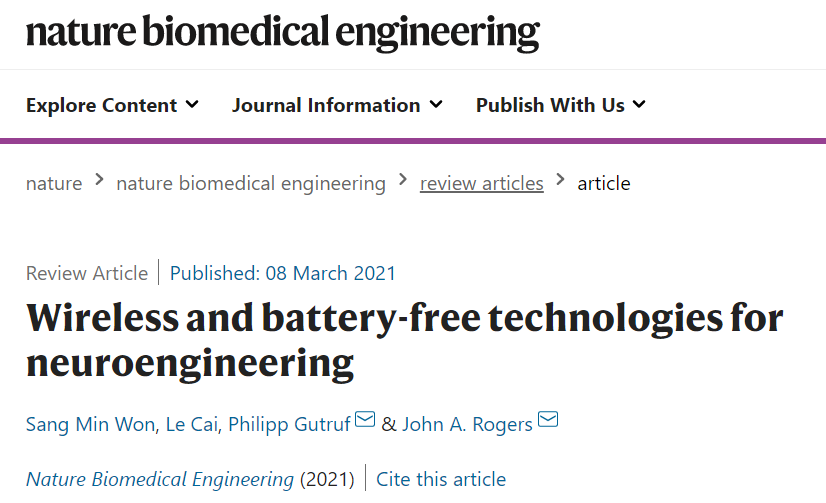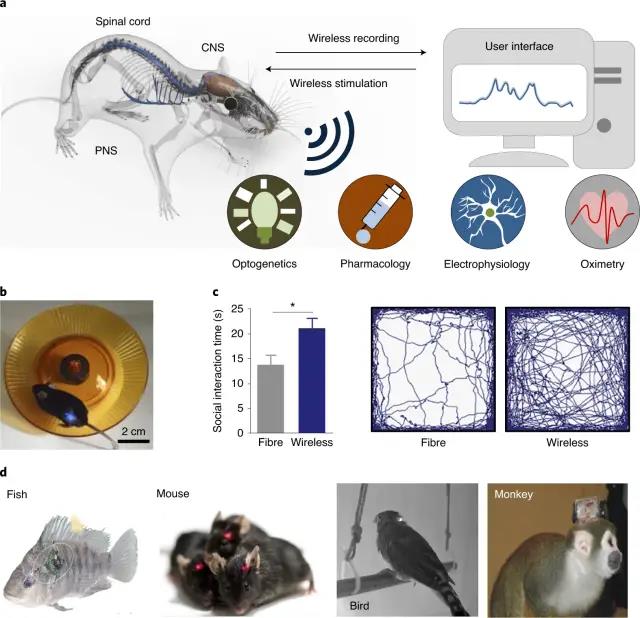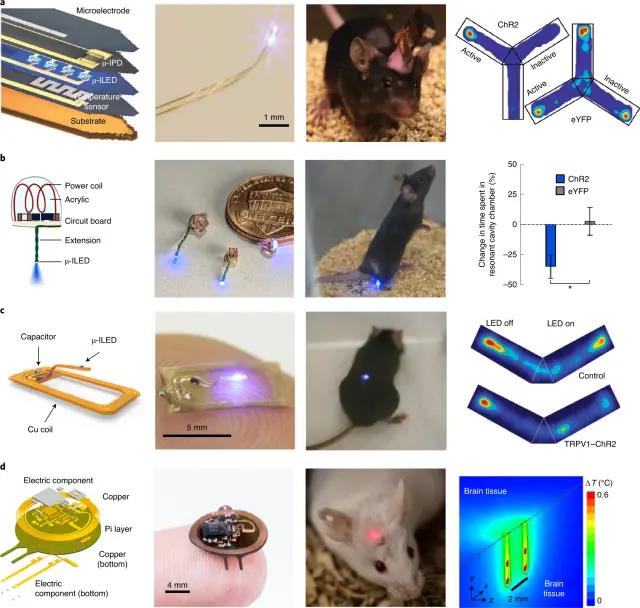
hotline:
17715390137
Tel/Wechat:
18101240246 (Technology)
0512-68565571
Email:mxenes@163.com (Sales Engineer)bkxc.bonnie@gmail.com
Scan the code to follow or search the official account on WeChat:
2D Materials Fronrier After paying attention,
click on the lower right corner to contact us,
Enter enterprise WeChat.
Professional Services Online

The progress of electronic, photoelectric, and microfluidic technology interface with living biological systems has laid the foundation for multifunctional devices that can interrogate and regulate the behavior of central and peripheral nervous systems. In addition to its application in basic research, neural tissue interfaces have also been developed to treat neurological diseases. Tethered and battery-powered devices connected to nerve tissue can limit natural movement and prevent social interaction in animal models, thereby limiting the application of these devices in behavioral neuroscience research.
In view of this, academician John A. Rogers of Northwestern University and Philipp Gutruf of the University of Arizona published a review in Nature Biomedical Engineering, discussing the latest developments in miniaturized and ultra-lightweight devices as neural engineering platforms. These devices are wireless, Battery-free and fully implantable, with the ability to match or surpass wired or battery-powered alternative products.






| Reminder: Beijing Beike New Material Technology Co., Ltd. supplies products only for scientific research, not for humans |
| All rights reserved © 2019 beijing beike new material Technology Co., Ltd 京ICP备16054715-2号 |